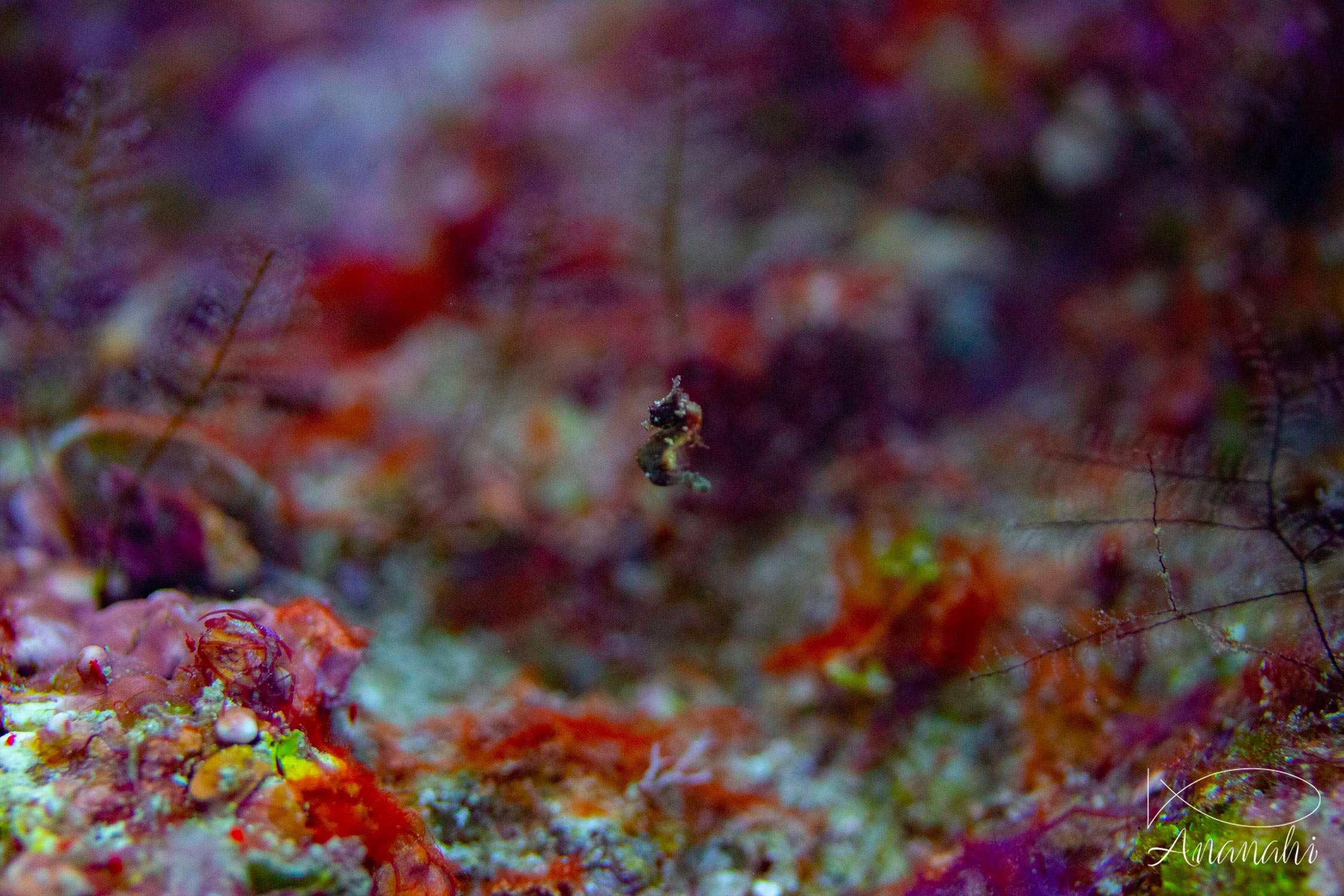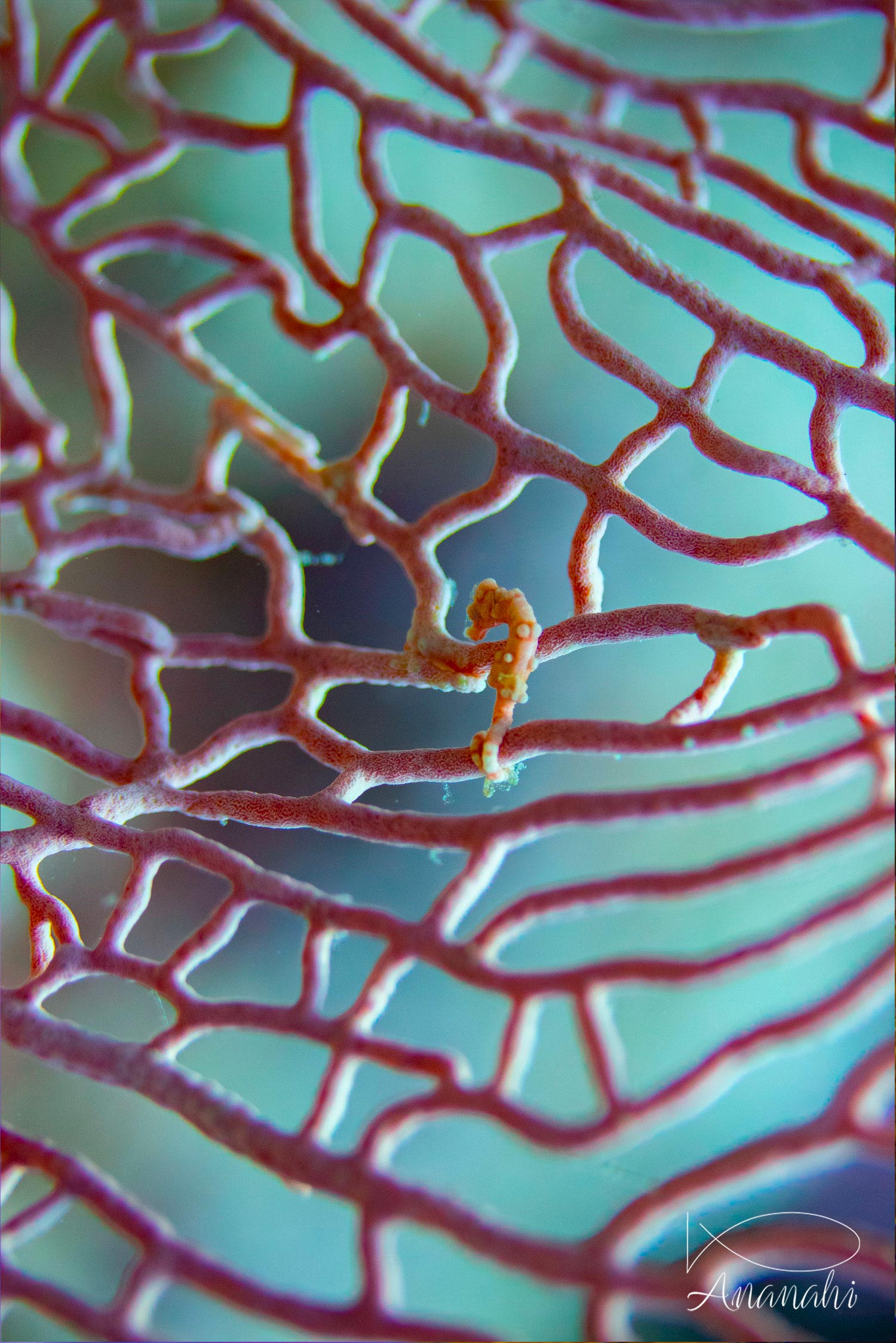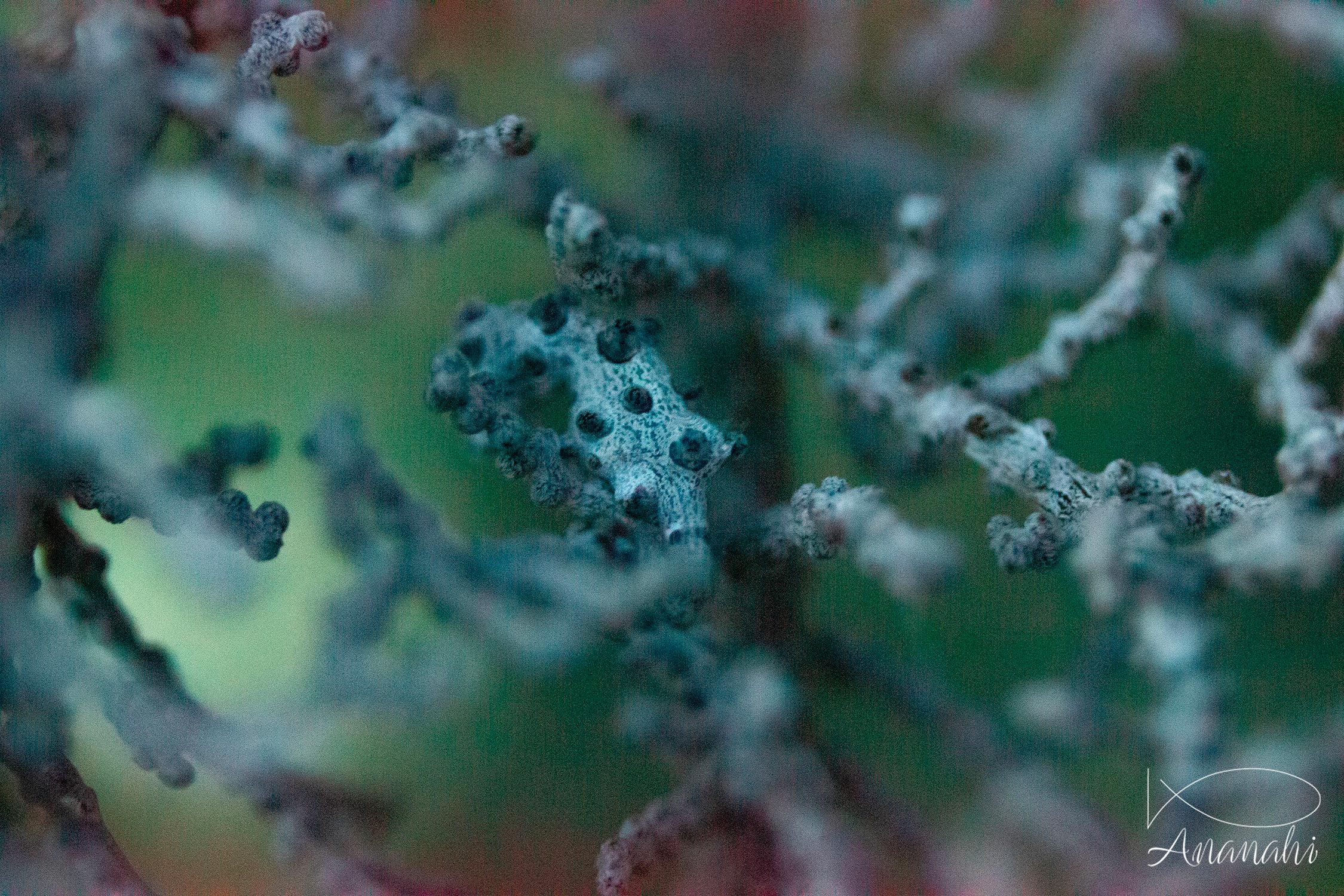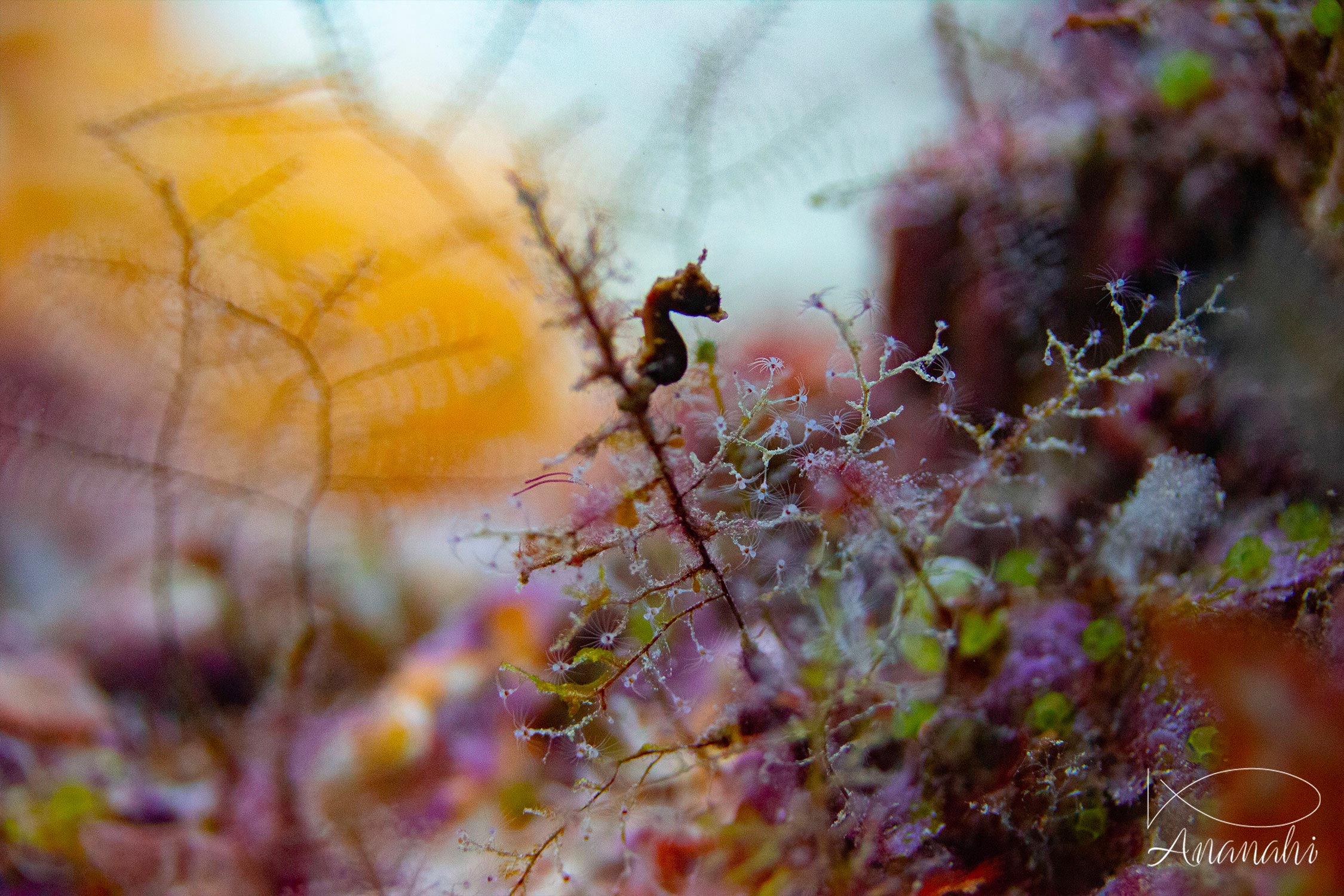
Scientific name: Hippocampus bargibanti
Size: Up to 1 inche maximum
Color: Tint varies according to the support
Distinguishing feature: Very small, his body is filled with multiple bulbous growths
Where did we see it: Bali and Gili, Raja Ampat

Scientific name: Hippocampus bargibanti
Size: Up to 1 inche maximum
Color: Tint varies according to the support
Distinguishing feature: Very small, his body is filled with multiple bulbous growths
Where did we see it: Bali and Gili, Raja Ampat
This seahorse is mostly visible in Asia. Very small, it can be hard to find.
However, if you know which gorgonians to look for (muricella plectana and muricella paraplectana) and that you take your time to find it, this shouldn't be a problem!
This hippocampus is carnivorous and feeds on small crustaceans.
It is also ovoviparous and they are the males that incubate the eggs, not the females.






We can hear the bull shark is very dangerous because of attacks near La Réunion island.
However, tens of them are living at 600 feet from the famous beach of Playa Del Carmen in Mexico. And there are no attacks.
The tiger shark has slender marks similars to the lines of tigers, hence its name.
When it is juvenile, these marks are round and not vertical. They change when it grows.
Turtles are in economy mode when they are sleeping. If they are woken during night, they may not have enough air to return to surface.
So, please be careful during night dives!